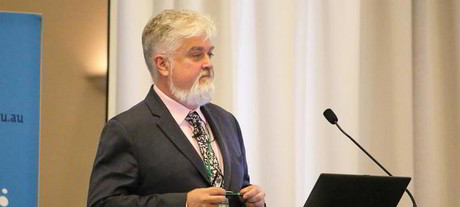Using data to improve Indigenous outcomes

The Department of Prime Minister and Cabinet is aiming to improve the way data is collected and used to improve policy outcomes for Indigenous Australians.
During a speech at the Australia and New Zealand School of Government (ANZSOG)’s conference on breaking the data silos last month, the department’s Deputy Secretary for Indigenous Affairs Professor Ian Anderson said the government has started collecting more accurate data allowing it to target services to an individual’s life circumstances.
Examples of the potential of data to improve Indigenous policy outcomes include the Aboriginal and Torres Strait Islander Health Performance Framework, which collects a range of health information in a single, comprehensive source.
The data has already been used to influence policies such as the allocation of resources to address Indigenous disadvantage.
“This kind of straightforward, common-sense use of data — in this case, organisations working together to achieve a shared vision of tracking progress on Indigenous health measures — serves as a good foundation to start thinking about how we can improve our entire data system so that it is in the interests of Indigenous Australians,” Anderson said.
But he added that significant challenges still need to be addressed. For example, too often the data collected about Indigenous Australians is on the national rather than a regional or community level.
Organisations are also still stymied in their attempts to share data by process complexities and a lack of shared vision. And while privacy is important, privacy considerations often serve as a barrier preventing the undertaking of work that could produce useful evidence.
“As data becomes further ingrained into the way we do things and the way we make decisions, we as data custodians must look at changing the way we approach and use data so that Indigenous Australians are represented in our increasingly data-driven world,” Anderson said.
“Essentially, we need to shorten the distance between those producing the data and those that are the object of the data — that is, Indigenous Australians. This requires a collaborative and cross-jurisdictional approach where data custodians and Indigenous Australians are all working together.”
It will also be important to develop greater Indigenous capacity around data analysis and research to empower local communities to make their own decisions using their own data.
As part of the reforms to the Closing the Gap indicators, the department plans to explore ways to make data more available to help Indigenous communities and governments better understand local issues, Anderson said.
The department will also look at ways to ensure more data is shared by both the federal and state governments.
Please follow us and share on Twitter and Facebook. You can also subscribe for FREE to our weekly newsletter and quarterly magazine.
Gartner: 52% of government CIOs expect IT budgets to increase in 2026
A Garter survey reveals government IT investments are expected to rise despite overall budget...
DTA report reveals APS digital talent shortfall
A report released by the Digital Transformation Agency predicts that the Australian Public...
APS to receive mandatory AI training
The federal government says its AI Plan will give every public servant the confidence and access...




